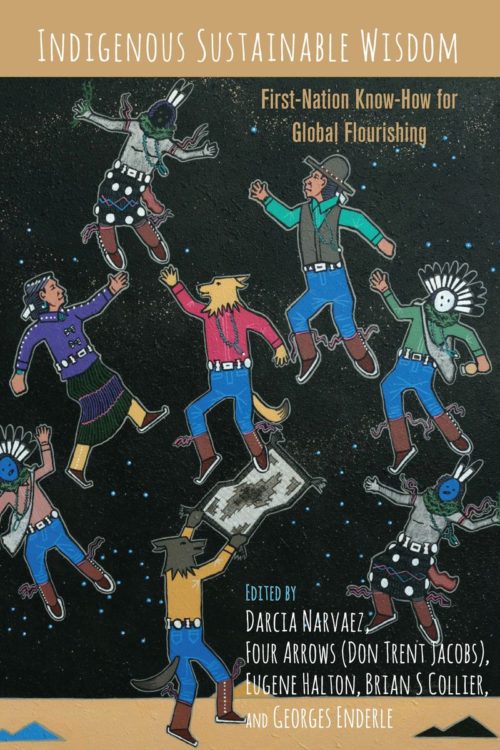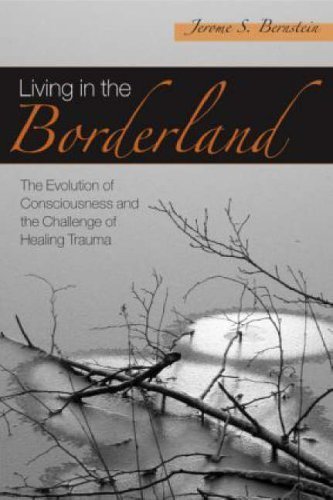Is The Human Collective Psyche Shifting In These Perilous Times? In The Borderland Of Consciousness
In the Borderland of Consciousness
Is the human collective psyche shifting in these perilous times?
As noted in the prior related post, Jerome Bernstein (2005) was pushed into changing his therapeutic practice. He encountered many people whose childhoods could not explain their current agitation. At the same time, he was exposed to a worldview that took into account all of nature in designing cures that healed people. Specifically, he learned from Navajo healers.
Bernstein describes his journey from the typical medical model of psychotherapeutic cure to a model more comfortable with mystery, client uniqueness, and connection to natural entities. He is optimistic about the evolution of the psyche, rooted in Jungian understandings of a collective unconscious guiding human societies.
But first, according to Bernstein, whence and what has the human psyche become?
“This new (evolved) psyche struck the death knell for oral tradition and all that it represents as the carrier of a particular kind of magic and numinosity no longer known, for the most part, in western culture. Lost were not only stories about the history of now-forgotten cultures but so were certain techniques and ways of healing based on magic, and along with them certain types of psychic/mental processes, psychic/mental ways of being. Different forms of intuition and the conscious use of body awareness for apprehending information in the environment as well as communication between individuals and groups and with animals are unknown to most of us today. Subtly, we substituted hearing for listening, the latter determined as much by that which is listened to, as by the one listening. This new psyche also made it possible for us to mentalize spirituality through an intellectualized focus on words of prayer and (written) song.” (p. 28)
Lost was the ability to deeply know and be touched instead of only understanding, believing, and remembering. Lost was an awareness of the multiple intelligences in the natural world, sentience, and power to relate and heal within the natural world.
Bob Samples (1976) similarly noted:
“The metaphoric mind is a maverick. It is as wild and unruly as a child. It follows us doggedly and plagues us with its presence as we wander the contrived corridors of rationality. It is a metaphoric link with the unknown called religion that causes us to build cathedrals — and the very cathedrals are built with rational, logical plans. When some personal crisis or the bewildering chaos of everyday life closes in on us, we often rush to worship the rationally-planned cathedral and ignore the religion. Albert Einstein called the intuitive or metaphoric mind a sacred gift. He added that the rational mind was a faithful servant. It is paradoxical that in the context of modern life we have begun to worship the servant and defile the divine” (p. 26).
Iain McGilchrist (2009) also noted this shift in consciousness in the western world. He uses the metaphor from the story of the master and his emissary for the title of his book: the master sends his emissary around the empire and pretty soon the emissary starts to think he is in charge.
This is the shift to what can be called “system 2” (Kahneman, 2011). Much of human behavior is governed by subconscious or implicit systems (“system 1;” Kahneman, 2011). But as I have pointed out (Narvaez, 2014), “system 1” capacities must be well-formed, initially in early life and thereafter within “kind” environments that train up intuition well. If not, a person will have various dysregulated systems that undermine judgment and action (e.g., insecure attachment, over or under-reactive stress response).
Bernstein summarizes:
“Characteristic of the western ego is a consciousness not merged with nature, but wholly cleaved from it. Therefore it is not a diffuse consciousness, but rather a primarily “solar” consciousness: Intensely focused, highly mental, abstract, categorical, mathematical, mechanical, and wedded to linear time. This consciousness is more comfortable with hearing than listening, more focused on the head (literally) than the body…This ego has spawned all that we have come to associate with western civilization: the sciences and the technologies…” (p. 33) but is “readily trapped in its own mentalisms…tends to be addicted to power and materialism, and thus has also spawned modern warfare with the capacity to eliminate life as we know it” (p. 34)…”the repression of the nonrational dimension because a defining characteristic, if not an obsession, of ego self-preservation” (p. 35)

When Bernstein’s approach to therapeutic healing repeatedly failed with multiple clients, he paid more attention to the Navajo manner of healing, and to their worldview. Instead of viewing the non-human world as comprised of inert, dead objects, the Navajo and other indigenous peoples “experience and related to a living universe…[where] respect for other life-forms filters into [their] every action” (P. Deloria, 2000, p. 6).
Bernstein’s clients experienced the feelings of animals and plants around them, much like indigenous peoples around the world (e.g., Descola, 2013; Narvaez et al., 2019) or they experienced a “great grief” at the general destruction of the natural world. They were experiencing the transrational, what the western ego seeks to suppress, but according to the Jungian analysis breaks through via dreams and feelings.
These sensitive people Bernstein calls “Borderlanders” because they display the shift of the psyche to a new form, one that integrates the rational ego and the nature consciousness of the prior psyches. The shift is driven by what Bernstein describes as an evolutionary process of species preservation. Children are often Borderlanders in that they are attuned to the animals and plants around them (assuming immersion in nature) but are taught that such sensitivities are imaginal and are ridiculed if they express sensitivity once in school. Artistic, creative people typically maintain their relationship with the transrational, feeling out of step with the rest of society.
Other Borderlanders are brought to their insights through trauma of one kind or another that promotes dissociation from the traumatic experience and the self experiencing it, instilling a transrational perspective of something beyond the trauma and an ability to enter liminal space.
In the next post, I describe some of his clients’ experiences of the Borderland.
BORDERLAND SERIES:
Approaching the Borderland of Transformation, Part 1
Do You Feel Grief for the Natural World? You may be experiencing the transrational borderland, Part 2
In the Borderland of Consciousness. Is the human collective psyche shifting in these perilous times? Part 3 (this page)
References
Bernstein, J.S. (2005). Living in the Borderland: The evolution of consciousness and the challenge of healing trauma. New York: Routledge.
Deloria, P. (1998). Playing Indian. New Haven, CT: Yale University Press.
Kahneman, D. (2011). Thinking, fast and slow. New York: Macmillan.
McGilchrist, I. (2009). The master and his emissary: The divided brain and the making of the western world. New Haven, CT: Yale University Press.
Narvaez, D. (2014). Neurobiology and the development of human morality: Evolution, culture and wisdom. New York, NY: W.W. Norton.
Narvaez, D., Four Arrows, Halton, E., Collier, B., Enderle, G. (Eds.) (2019). Indigenous Sustainable Wisdom: First Nation Know-how for Global Flourishing. New York: Peter Lang.
Samples, B. (1976), The metaphoric mind: A celebration of creative consciousness Addison- Reading, Massachusetts: Wesley Publishing Company.


